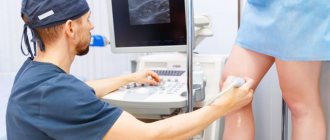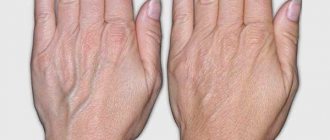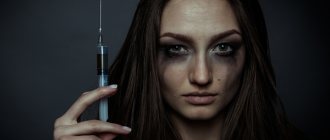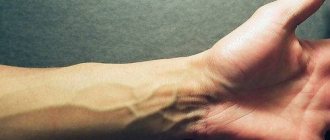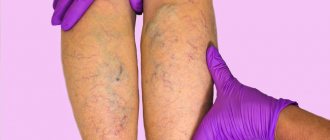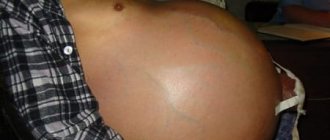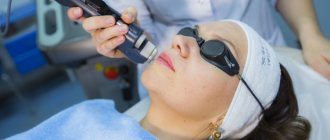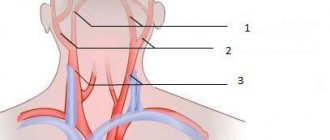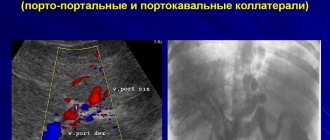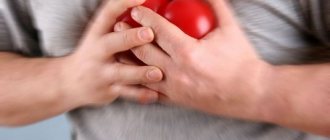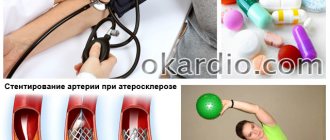Reasons for rejection
Very thin blood vessels in the arms and lower extremities, which are virtually invisible, disappear due to such factors:
- passive lifestyle;
- lack of physical activity;
- freezing of the body and sharp constriction of blood vessels;
- poor blood circulation;
- individual characteristics of the body;
- age-related changes;
- low muscle mass;
- nervous tension.
Blue veins on the legs and arms often indicate vasodilatation and increased blood flow. Only appropriate diagnostics from a specialist will help to establish the exact causes of the disappearance of veins.
Often, veins disappear before injections, which is associated with stress on the body. After some time they become visible again. Thin veins in the legs and arms can be this way due to the physiological characteristics of the body. Treatment related to hiding blood vessels is prescribed by a doctor as needed. If they appear as a result of physical activity, this is a signal that you need to lead a more active lifestyle, strengthen blood vessels and improve blood circulation. Perhaps when the veins disappear, there is no need to do anything. There are unqualified personnel who cannot find them, but at the same time everything is fine with the person.
Associated symptoms
In the case of pathological provoking factors, pronounced veins usually cause not only aesthetic, but also physical discomfort.
This mainly manifests itself:
- heaviness and pain in the hands;
- swelling of the hands.
One of the common symptoms is a constant desire to fix the arms above the level of the head (in this position, the outflow of stagnant blood improves).
In difficult cases, when vein pathology is caused by serious circulatory disorders, as well as thrombophlebitis, the following is observed:
- slight increase in body temperature;
- hyperemia of the skin of the hands;
- lump, lump, lump, swelling or ball at the site of the lesion;
- swelling, blueness;
- change in skin color;
- muscle weakness;
- the appearance of ulcers on the skin.
We suggest you read Veins removed from the leg and how to care for them. The postoperative period after removal of leg veins should be exactly like this.
Treatment: what to do if the veins in your arms disappear
There are comments to the text, you can read them
The condition of the circulatory system can be improved using preventive methods. It is important to exercise regularly, lead an active lifestyle and eat right. It is better to exclude alcohol and nicotine. Synthetic drugs are prescribed only after appropriate diagnosis and determination of the disease. Vasodilator medications are prescribed if necessary. In the case where the veins have disappeared during the installation of a catheter, blood sampling or injection, the limb is bandaged with a rubber tourniquet, above the point where the needle enters. If the doctor determines that the cause of such a feature is a disturbance in the functioning of the cardiovascular system, it is important to begin treatment of the factors that provoked such a deviation. Self-medication with folk remedies can cause irreparable harm to human health.
Very important! Andreeva E.: “I can recommend only one remedy for the quick treatment of varicose veins” read more.
Prevention
Preventive measures aimed at preventing the swelling of veins on the surface of the skin of the hands come down to reasonable exercise and a healthy lifestyle.
We suggest you familiarize yourself with After surgery hematoma - Miscellaneous
They include:
- charging;
- quitting smoking, alcohol and coffee;
- taking a contrast shower;
- balanced diet.
Author of the article:
Dmitrieva Yulia (Sych)
– In 2014, she graduated with honors from Saratov State Medical University named after V.I. Razumovsky. Currently working as a cardiologist at the 8th City Clinical Hospital in the 1st clinic.
Preventive procedures help prevent varicose veins:
- Avoid clothing that is too tight;
- Minimize stress on your hands;
- If possible, carry weights on top;
- Use a contrast shower;
- Eliminate bad habits, especially smoking;
- Eat a lot of vegetables and fruits;
- Take vitamin C.
The use of preventive measures in combination with other types of treatment can achieve significant improvements in health. Do not neglect the disease and consultation with a doctor, so as not to cause complications.
Why are there bad veins on the arms?
The main reasons that a person has bad veins in his arms:
- Frequent injections of drugs.
- Injection of narcotic substances.
- Heredity (congenital features of the structure of venous vessels).
- Excess weight (the vein is hard to see under a layer of fat).
- Low level of physical fitness (most often bad veins in women who do not perform heavy physical work).
The following can temporarily make a vein less visible:
- Hypothermia.
- Fear.
- Taking certain drugs that increase the tone of the venous wall.
If the veins are poorly visible, this becomes a problem for both the person and the medical staff. The risk of complications increases. Such veins are often pierced through, which can lead to the formation of hematomas (bruises). They can be quite painful. The risk increases that when a drip is installed, the medicine will not go into the vein, but into the surrounding tissue.
Why does this happen?
It is important to be able to distinguish in which case this symptom is a variant of the norm, a physiological condition, and in which it is pathological, requiring diagnosis and treatment.
This is what it looks like in the photo:
In ordinary healthy people
As a normal option, large swollen veins in the arms may appear in the following situations:
- A person regularly performs strength physical activity on his hands. In this case, the pressure on the vessels increases, expanding their lumen, and at the same time, the arm muscles become hard - they also help push the veins out.
- From the blow. The site of the bruise usually swells, the vessel becomes more noticeable and pronounced. If a person hits his hand right in the place where the vein passes, then it may swell, turn blue or purple, sometimes even turn black and a bruise will form around it.
- Thin, translucent skin (especially in girls, teenage boys and children), with a small layer of subcutaneous fat that could hide blood vessels. Normally, this problem should not cause cosmetic defects in a child.
- A hereditary feature is the superficial location of the veins. Most often, enlarged veins appear after too much physical exertion or when a person holds for a long time and then quickly lowers his hands. It occurs less frequently in boys than in girls.
- Hot weather, significant increase in air temperature. This factor sometimes provokes increased blood pumping in the extremities, due to which the vessels and capillaries increase in size, inflate and become convex (on the legs this manifests itself as varicose veins and swelling in the evenings).
- In older people, as a result of the aging of the body. With age, the elasticity of blood vessels begins to be lost, the walls of the veins are unable to maintain their shape, and the tortuous pattern on the hands becomes more noticeable.
- Pregnancy, postpartum period. In this condition, bulging veins in women is a physiological process associated with hormonal changes in the body.
- Blood collection, IV placement, anesthesia administration. In some people, the veins may swell after a blood donation procedure, or after a catheter is removed. In this case, the injection site often ache, itch, and there is redness and burning. This is an absolutely normal phenomenon that is associated with anatomy, there is no need to worry. But if there is also pain, you should consult a doctor, this may be a sign of post-injection phlebitis.
- When you lower your hands. A similar phenomenon is usually observed in people with problems with blood pressure, with increased blood density. When the arms are lowered, especially if they had been raised for a long time or were tense, the blood does not have time to circulate normally and the veins become more visible.
If the veins swell and then disappear, this may indicate a temporary circulatory disorder. In this situation, there is no point in trying to reduce them; they must hide on their own.
In athletes
In people who are actively involved in sports, veins appear much more often than in others. For example, in bodybuilders and bodybuilders, increased venousness and pulsation is due to the fact that during training the athlete’s arms bear a huge load - the vessels from the inside bulge from the muscles, which grow rapidly.
Another option is if the vessels of the upper or lower extremities swell immediately after training. This happens because physical activity increased blood flow and expanded the lumen of the vessels, which then come to the surface.
Due to illness
Pathological reasons for swollen veins in the arms are less common than physiological ones, but they should not be ignored. It is important to exclude in time a possible disease that will cause not only aesthetic inconvenience, but also possible serious complications in the future.
What to do if veins are hard to see?
Here's what you can do if the veins in your arms are hard to see:
Clench your hand into a fist several times, straightening it. All patients who donate blood for testing or receive intravenous injections of medications are asked to do this. Typically, this small physical activity increases blood flow to the arm and dilates the cubital vein.
Get warm. When you're hot, your veins dilate. When it's cold, they narrow. If you are cold, you need to warm up before giving the injection. It's not difficult to do this. It is enough to drink 1-2 cups of hot tea or perform physical exercises (for example, squats).
Give up. If the situation allows, climb onto a hill and hang your arms down. Blood follows the laws of gravity. It will rush to your hands under the force of gravity. The walls of the veins are very elastic. Being filled with blood, they will stretch and become more noticeable for a while.
Pump up muscles. Physical training that builds muscle mass also dilates the veins. Look what bodybuilders look like in the photo. It is difficult to imagine that the nurse will not be able to find a vein for an injection in any of them. True, the path is quite long. Veins will noticeably improve only a few months after starting training.
Lose weight. Once there is less fat under the skin, the veins will become more visible to the eye. It will be easier for the nurse to get into them.
Alternative Therapies
If the veins become very enlarged and protrude, but there are no blood clots or a threat to health, alternative medicine can come to the rescue. This is a whole set of folk recipes, treatment with leeches, acupuncture.
Important: before deciding on unconventional methods of treatment, you need to consult a doctor and make sure that the chosen method will not harm or aggravate the situation. Poor patient tests will be the first contraindication for the use of alternative medicine methods.
Reviews from doctors about alternative medicine are mixed, but all experts agree that they can only be used when there are no blood clots or visible varicose veins.
Folk recipes
We bring to your attention popular recipes for folk remedies that can help with swollen veins in the hands:
- Take a green tomato (according to the degree of ripeness), cut it into slices, place it on your hand in the place where the veins emerge and swell, and wrap it with an elastic bandage overnight. In the morning, remove everything and spread the skin with a high-fat cream.
- Mix crushed wormwood (3 tablespoons) with the same amount of curdled milk, smear the resulting medicine on your hand and wrap it in cling film. After 20 minutes, remove the compress and spread the skin with rich cream or sour cream. This will take up to a month.
- Apple cider vinegar and birch bud tincture are mixed 1:1, rub your hands with the resulting mixture twice a day.
- Chopped garlic and butter in equal proportions are mixed and applied to the hands in places where the veins are swollen. The compress needs to be insulated as much as possible (using cling film and a towel on top). You will have to smear visible veins for up to 5 months.
- Drink herbal tea: rose hips, blueberry leaves, rowan berries and St. John's wort are mixed in equal parts. Take half a glass twice a day, brewing a tablespoon of the resulting tea with boiling water.
Hirudotherapy
Treatment with leeches is practiced even with pronounced veins, when the hands swell from insufficient blood outflow.
The essence of hirudotherapy is that a specially grown medical leech is placed on a patient at a certain point on the body. During the bite, a substance, hirudin, enters the blood, which thins it and prevents blood clots.
Patients note an improvement in the appearance of their hands and overall well-being after the first session. After manipulation, the leech is placed in medical alcohol.
Acupuncture
Using this method, certain points of the human body are affected by introducing special thin needles into them. They activate biological processes in the body, thereby restoring normal blood flow and preventing congestion.
This method is not recommended for everyone, as it has a number of contraindications. Before deciding to go to an acupuncture session, you need to take all the tests and notify your doctor.
How to prick bad veins?
If the cubital vein is not visible, or it is inflamed, or if there are other reasons that do not allow frequent injections, there are several options for getting out of this situation:
1. Reduce the number of injections. The less often a vein is pierced, the less risk it will hide. To reduce the number of injections, it is not at all necessary to discontinue some medications. This effect can be achieved in two ways:
- Increase the dose by reducing the frequency of injections.
- Administer several drugs simultaneously in one syringe or intravenously.
2. Inject into a vein of the hand. Less commonly, injections are made into the veins of the feet. Both the first and second are more painful. But if there is no other way out, and if it is impossible to replace intravenous injections with intramuscular ones, we have to do it.
3. Install a peripheral venous catheter. It avoids further vein punctures. The catheter is left in the vein for the entire duration of treatment. It is fixed with a patch or hydrogel. In the future, all drugs are administered through a catheter, and the vein is not damaged each time.
Of course, if you need to give a single injection, it is not advisable to insert a catheter. In this case, if the veins are poorly visible, you should seek the services of a good nurse. A person with extensive experience will always find a vein, even the most inconspicuous one.
Laser treatment
Treatment of any pathology depends on the cause that provoked it. Therapeutic measures for pronounced veins can be medicinal and surgical.
The last option is resorted to in two cases: either if the disease progresses and there is a risk of a large blood clot, or if the patient simply wants to eliminate an aesthetic defect.
| Cause of Vein Swelling | Therapy |
| Thrombophlebitis | Antiplatelet agents and anticoagulants, anti-inflammatory drugs, warm compresses. |
| Hereditary predisposition | An aesthetic problem that is inherited can only be eliminated through surgery. |
| Increased physical activity | Moderate exercise or temporary refusal of it will make the veins less noticeable. |
| Varicose veins | Surgical intervention or conservative treatment. |
General recommendations
To enhance the effect of drug or surgical therapy, you need to help the body remove (hide) visible veins.
For this:
- Drink enough clean, non-carbonated water. This will improve the structure of the skin of your hands, it will become smoother and more elastic.
- Avoid coffee and alcohol. This will make the skin color uniform, without a “gray” tint.
- Use hand creams. This can be either a simple moisturizer or a special anti-varicose cream. The latter will improve the tone of blood vessels, and, if the problem has not gone far, will hide them.
Hand exercises
There is a whole list of exercises (pictured below) that will help eliminate large veins.
Here are the most effective:
- Clasp your hands into fists, lower and raise them “all the way”, bending your hands – 10 times.
- Alternately extend your fingers to the back, then together.
- Gather the fingers of the right and left hands into a bun, lower them together downwards, bending the hand, return to the starting position - 10 times.
- Work your thumbs: pull them back and forth and to the sides.
- Clenching your hands into fists, twist them, bending your wrist.
- Forcefully bend and straighten your fingers into fists – 10 times.
- Place your palms together in front of your chest, bend your arms at the elbow joints, raise your elbows up, lowering your hands to your navel.
- Walk along any surface with your fingers, imitating playing the piano.
- Straighten your arms, point them in different directions, swing them in a circle - forward and backward.
- In the same position, bend your elbows and make circular movements of your limbs, first to the right, then to the left.
Such exercises, performed daily, can really improve the aesthetic appearance of the hands by restoring the tone of the blood vessels.
Conservative treatment is aimed not only at eliminating the visible defect, but also at stopping the cause that caused it.
| A drug | Group | Action |
| Venobene, Troxevasin, Dolgit | Local application | Relieves pain |
| Dipyridamole, Clopidogrel, Aspirin, Cardiomagnyl | Antiplatelet agents | Reduce the risk of blood clots, improve blood flow |
| Urokinase, Fibrinolysin, Trypsin | Fibrinolytics | Thinning blood, preventing blood clots |
| Trental, Pentoxifylline | Improved blood circulation | Prevents blood stagnation in the extremities, vasoconstriction |
| Ibuprofen, Ketonal, Dicloberl, Meloxicam | NSAIDs (non-steroidal anti-inflammatory drugs) | Relieves inflammation and pain |
Remember that you should never prescribe medications and treatment for yourself! This label is provided for informational purposes only.
Among the physiotherapeutic procedures that can help are taking a contrast shower twice a day for at least 10 minutes, and massage. It can even be done independently, at home, either with your hands or with the help of various massage devices. For dry skin, you should use cosmetic oil.
Hand baths (used in nail salons) are also used. Modern models are equipped with an infrared emitter; it is possible to conduct a session of magnetic therapy and vibration massage. Such comprehensive care will definitely improve the appearance of the hand area, relieve fatigue and relax them.
If, as a result of the course of the disease, the veins are very prominent, and drug treatment has no effect, then the patient will definitely undergo surgery. If there are no pathologies, but bloating is observed for some non-serious reasons, for example, as a result of heredity, then everything depends only on the desire of the patient himself.
There are several surgical options:
- Phlebectomy. This is the complete removal of a vein affected by varicose veins using special instruments.
- Sclerotherapy. This type of surgical intervention involves turning off the vein from the bloodstream (its functions are assigned to other vessels) and filling it with a special sclerotic fluid.
- Laser therapy. Veins that are swollen disappear under the influence of a laser, which glues them together from the inside. This is the most painless and gentle operation.
- Ultrasound thrombolysis. It is used if a blood clot has formed in the bloodstream. Then, with the help of a certain wavelength, it is destroyed.
Depending on the chosen surgical procedure, the rehabilitation period will vary. The shortest is with laser therapy, the longest is with phlebectomy. In the latter case, hands should not be subjected to heavy physical effort for a month.
It is impossible to determine why the veins in the arms are swollen and what to do about it without the participation of an experienced specialist. To eliminate the risk of making an incorrect diagnosis, you need to make an appointment with a phlebologist. After a consultation, it is possible to diagnose the degree of damage, the severity of the manifestation and determine further actions in the direction of recovery.
Treatment is not always required, since before the lesion starts, prophylactic methods can be used for primary symptoms. The main task of the doctor, together with the patient, is to determine what caused the disease, as well as to make a prognosis about the disease. If the cause of the disease is discovered, you should eliminate it from your life as much as possible, for example, reduce the intensity of physical activity.
If treatment is still required, it can be done through the following therapies:
- Hirudotherapy. To this day, there is debate regarding the effectiveness of leeches; it is definitely known that they allow you to remove stagnant blood and thin it somewhat. The saliva of leeches contains a certain enzyme that helps remove swelling from the blood vessels. The first improvements can appear after just a few procedures;
- Surgical intervention. The method is characterized by a radical approach, therefore it is used only in cases where there is a high risk of complications, for example, blood clot separation or when other methods are unsuccessful;
- Laser therapy. A high-tech and effective method of treatment, but the cost of therapy is high. The principle is to glue the dilated walls of blood vessels using a laser. Thanks to the reduction in volume, they stop bulging;
- Sclerotherapy. The principle of operation is very similar to the previous version, the veins also stick together and then die. Thanks to their failure, the bulging stops. The technique is based on therapy using special injections, drugs called sclerosants;
- Drug treatment. There are a lot of drugs that affect swollen veins in the arms. Moreover, the form of these medications is also varied, from external use to oral tablets and drops. The effectiveness of the method lies in its complex effect, that is, normalization of blood vessels, elimination of the inflammatory reaction and pain relief are achieved. It is important to use medications under the guidance of a doctor.
We suggest you familiarize yourself with Numbness of hands at night causes
In the initial stages of the disease, only conservative treatment is used. When the disease becomes more complicated, preference is given to more effective methods, although previous measures are not forgotten.
Laser therapy is used at stages 2 and 3 of the lesion. The technique is very gentle and does not require surgical intervention. A light guide is inserted into the lumen of the diseased vein, which provokes the formation of a dense blood clot, and the vessel simply heals without a trace. After using the technique, leisurely walks and the use of compression stockings are recommended.

